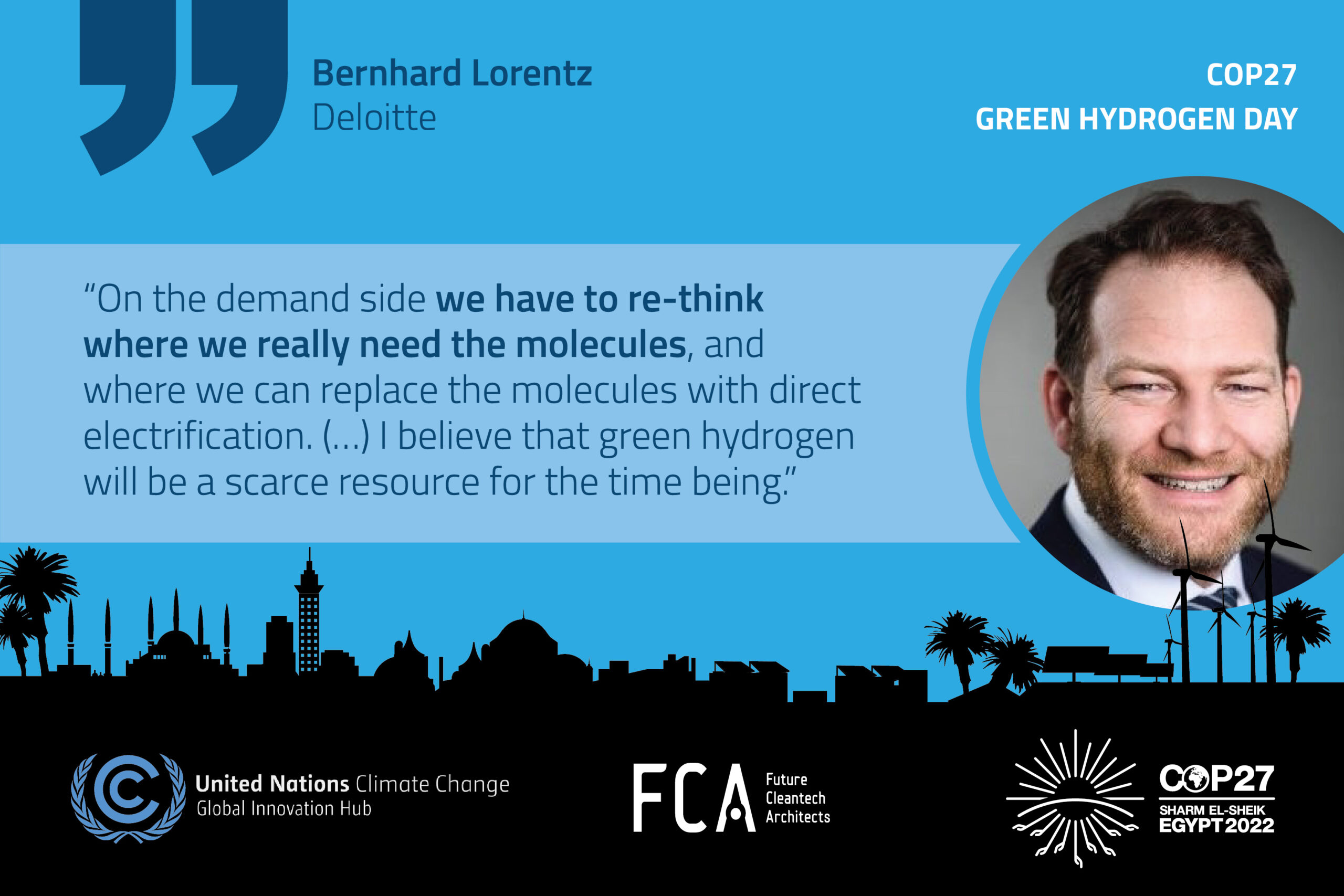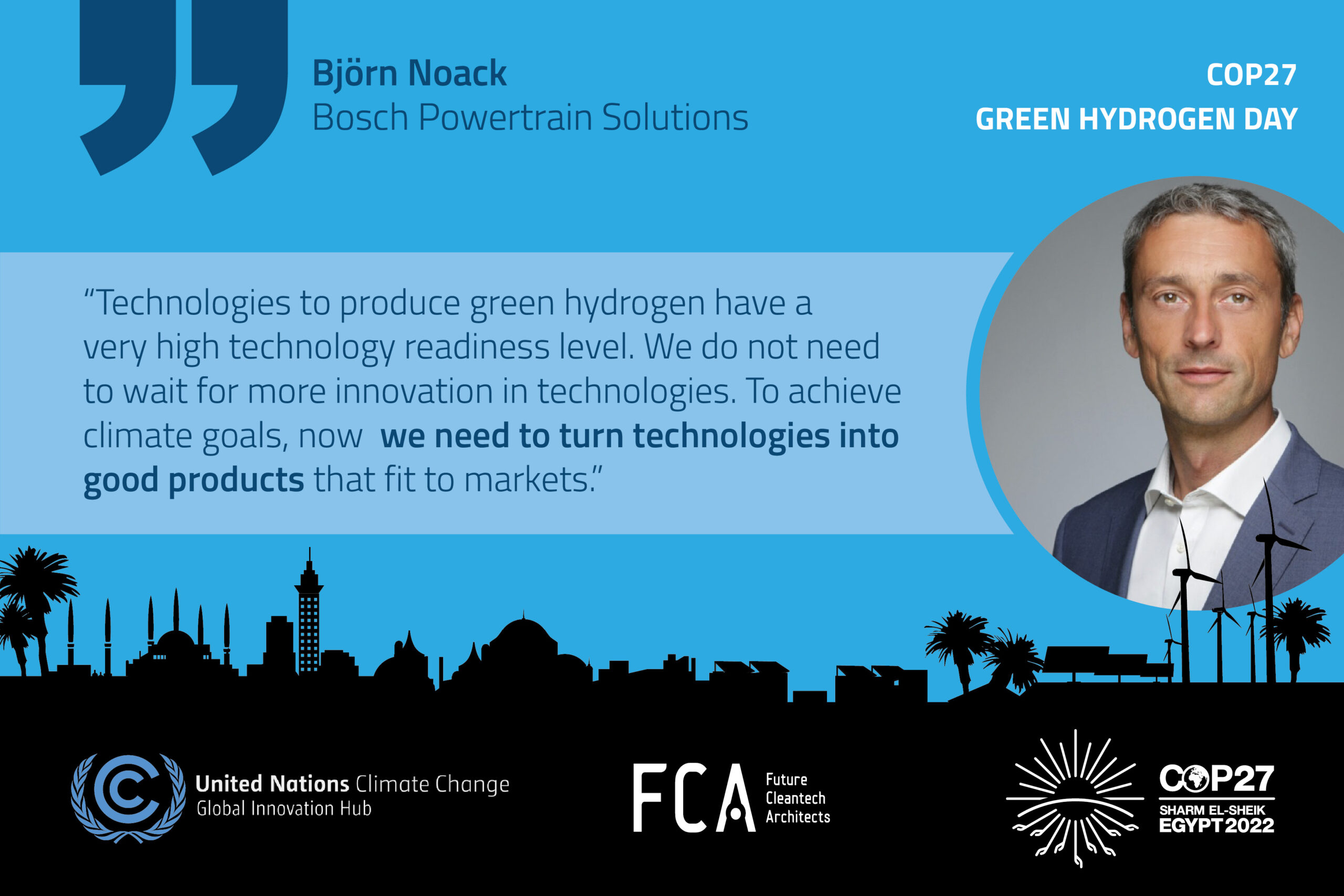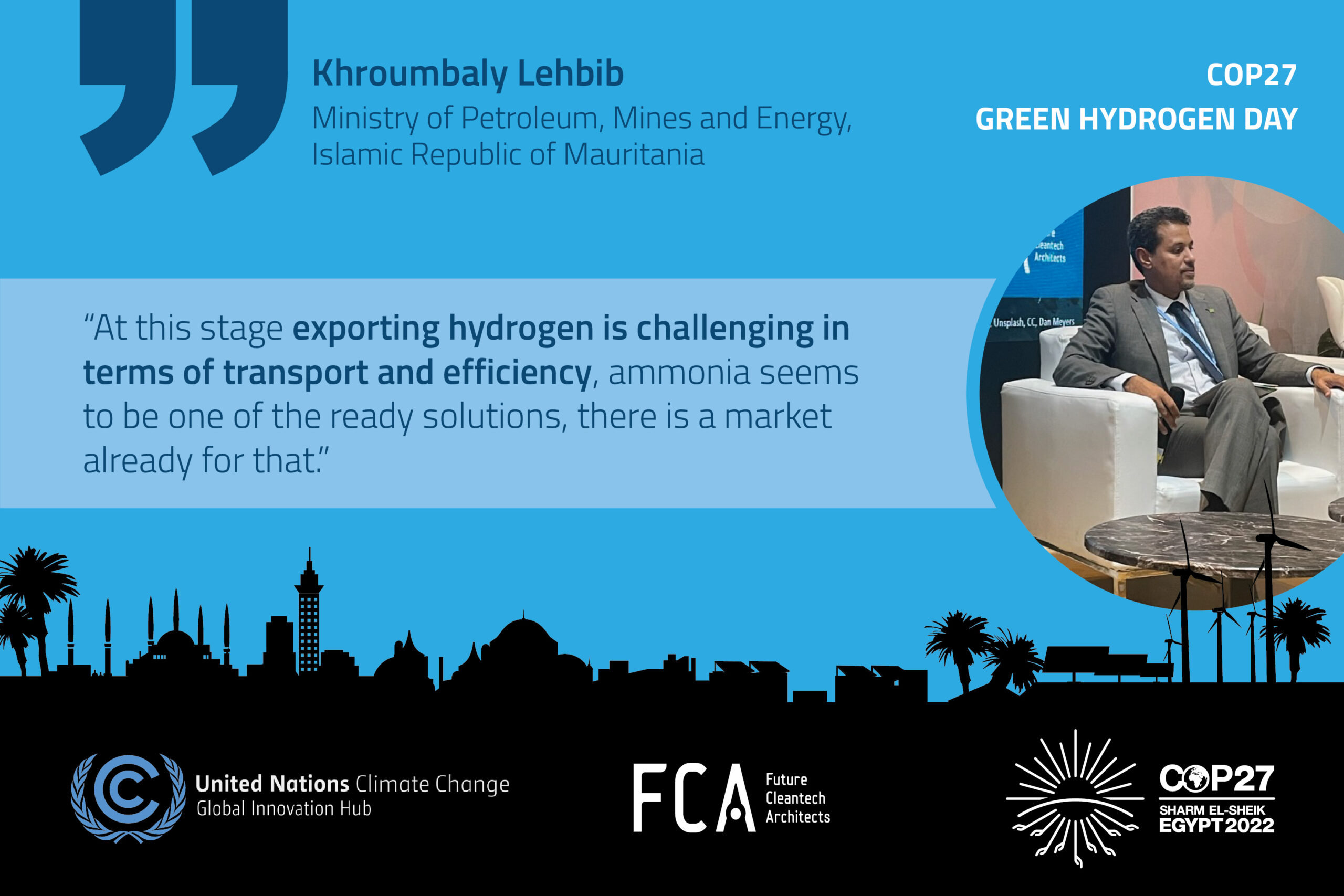FCA at COP27
FCA Events | Green Hydrogen Day
The Green Hydrogen Day, co-hosted with UN Climate Change’s Global Innovation Hub, focused on the core value chain of green hydrogen and its innovation gaps, taking into consideration that hydrogen demand is predicted to increase massively and huge challenges remain to produce, store, and transport the quantities of green hydrogen needed for a net-zero future. During this day, we engaged those stakeholders on both the public and private side that will play a pivotal role in accelerating the massive transition of many industry sectors.
Green Hydrogen Day
Key takeaways
Promoting global climate change mitigation, economic growth, enhanced international competitiveness, and the eradication of energy poverty relies heavily on embracing social and technological innovation.
- We must establish standards and certifications to enable a green hydrogen market.
- Green hydrogen will be a scarce resource for years to come, it is not a silver bullet for every industry.
- The scale-up of supply and demand must happen together, to avoid a “chicken-and-egg" problem.
- All forms of low-carbon energy are needed to meet energy demand.
- We need to de-risk hydrogen projects and make them bankable.
- We must establish standards and certifications to enable a green hydrogen market.
- Green hydrogen will be a scarce resource for years to come, it is not a silver bullet for every industry.
- The scale-up of supply and demand must happen together, to avoid a “chicken-and-egg" problem.
- All forms of low-carbon energy are needed to meet energy demand.
- We need to de-risk hydrogen projects and make them bankable.
- Heavy industry requires larger quantities of green hydrogen and a transport infrastructure for its operations.
- Significant cost reductions are needed before having a business case to adopt green hydrogen.
- We need CCUS infrastructure and legislation to tackle the unavoidable emissions from the cement industry.
- The EU will not be self-sufficient in green hydrogen, imports will be required.
- The technology to produce green hydrogen is relatively mature, we now need new business models to turn those technologies into viable products.
- We need to look beyond efficiency and focus on levelized cost of energy.
- Demand aggregation can enable economies of scale and deliver greater certainty for investors.
- Regions with high demand for green hydrogen tend to not have the renewable capacity to supply themselves, they will import from regions with low demand and abundant renewables.
- We need stronger efforts on identifying the most effective use cases for hydrogen consumption.
- There is huge potential for green hydrogen production in the Global South. The social case must be considered before large-scale investment in a new industry.
- The creation of a value chain cannot be pushed, only pulled. Identifying the off-takers is the first step.
- Connecting academia and industry can help low TRL technologies transition to real-world impact.
Watch our sessions
A Realistic Assessment on the Current State of Green Hydrogen (Session 2)
The Heavy Industry Perspective (Session 3)
Enabling the development and up scaled deployment of GH2 through Systemic Innovation (Session 5)
The Innovators' Laboratory (Session 6)







FCA Events | Climate Action Hub
Building Our Future: Innovative Technology to Decarbonize the Cement Industry
Climate Action Hub
Key takeaways
Building Our Future: Innovative Technology to Decarbonize the Cement Industry
In this Climate Action Hub session we focused on cement decarbonization and addressed, among others, the questions: what makes cement such a hard sector to decarbonize? which specific process steps need to be solved and what are the best options so far? which kind of breakthrough innovations are in the making? what kind of government support is needed to transform the cement industry?
- There is no silver bullet solution, we must innovate at several points in the process.
- Public procurement of low-carbon cement and carbon pricing could push production in the right direction.
- Demo low-carbon cement production are already under construction but have long ramp-up times.
- Concrete recycling and design for construction have an untapped potential to increase circularity.
